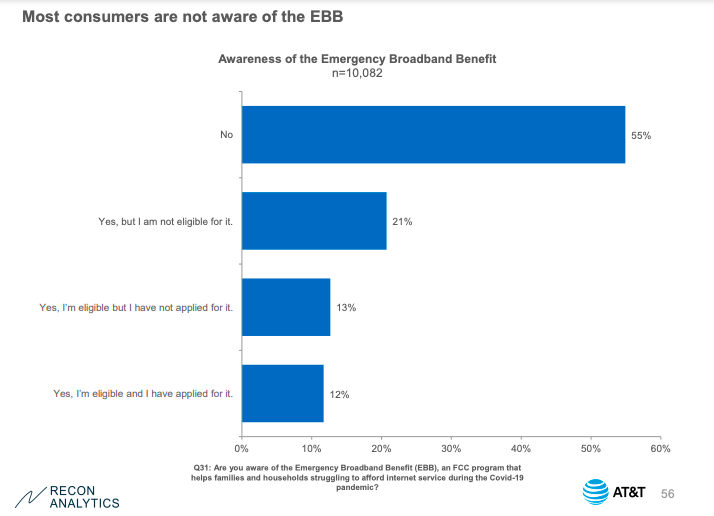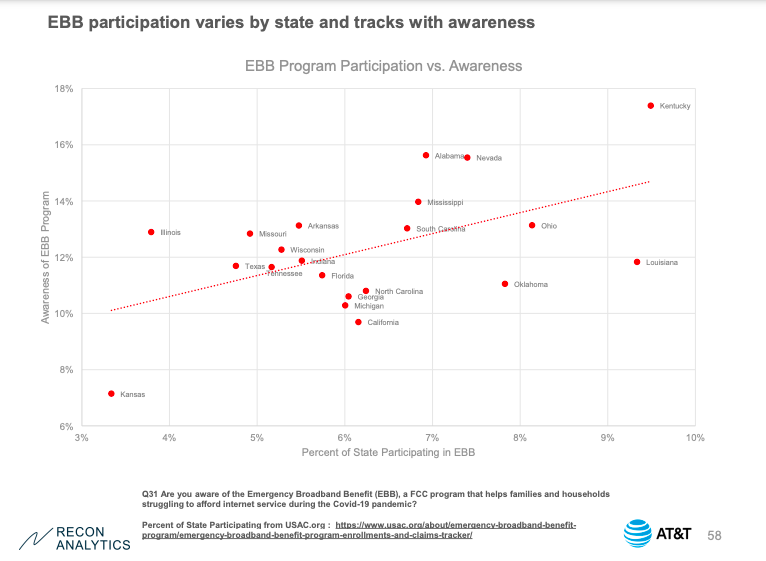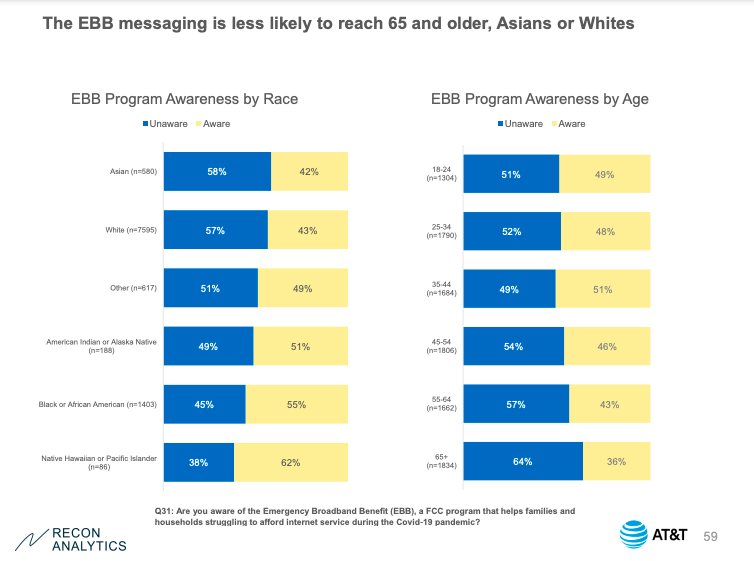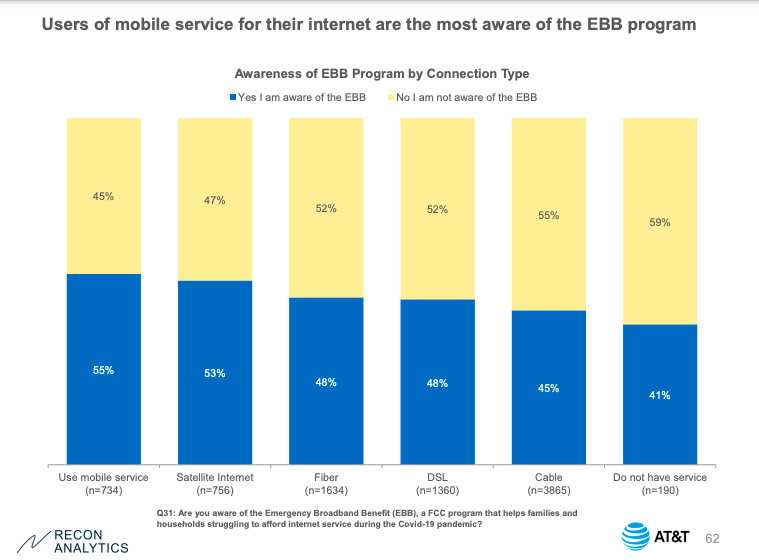As of October 2021, the majority of people in AT&T’s 21-state footprint were not aware of the Emergency Broadband Benefit (EBB) program, which was established during Covid to help low-income people connect to the internet.
According to a survey conducted by Recon Analytics on behalf of AT&T, 55% of consumers were not aware of the EBB program. Recon Analytics used Qualtrics to conduct the online survey, which garnered more than 10,000 respondents.
Only 12% of respondents were aware of the program and had applied for EBB benefits. Curiously, 13% of respondents who were aware of the program and qualified for it had not yet applied for benefits.

Since the survey was conducted, the EBB program has been converted into the Affordable Connectivity Program (ACP). Congress mandated the creation of the ACP as part of the Infrastructure Investment and Jobs Act, which became law in November 2021. The program was designed as a permanent extension of the EBB.
Under the ACP, eligible household can receive $30 per month off their broadband bill. And a one-time discount of up to $100 will also be provided to eligible households for the purchase of a laptop, desktop computer or tablet.
RELATED: FCC rolls out Affordable Connectivity program to replace EBB
The vast majority of internet service providers signed up to participate in EBB and rolled their participation over to ACP when it became available at the beginning of this year. The benefits are available for both fixed and mobile broadband. Consumers can check the FCC’s full list of participating service providers and find out how to apply for benefits.
Awareness of benefits
According to the AT&T survey, there were some substantial variations in awareness of the EBB benefits. Sixty one percent of people in Kansas were not aware of the program, while things were better in Kentucky, where 47% of respondents were unaware.

There were also disparities in awareness between different age groups and ethnicities.
Native Hawaiians or Pacific Islanders had the highest awareness followed by Black or African Americans. It’s possible that grass-roots outreach campaigns were more effectively targeting these groups.

People 44 years of age and younger also had more awareness of EBB than those over age 44.
The FCC has been addressing the awareness problem by working with partners such as community groups and boys and girls clubs, YMCAs, food banks and libraries to name a few.
Of course, promotions by service providers such as Verizon and AT&T really help get the word out as well.

Users of mobile service for their internet were the most aware of the EBB program. This tracks with the FCC’s decision last year to make its EBB outreach program “mobile friendly.” The agency realized that if it’s trying to reach people who potentially don’t have home broadband, then it would make sense to market the program more heavily via mobile.